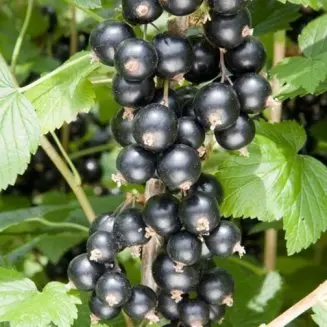Contents
Blackcurrants are highly valued for their health benefits, although their excessive acidity is not to everyone’s liking. The berries of hybrid plants, like the Pygmy currant, having unique qualities, have acquired a dessert sweet taste and large-fruitedness as a result of selection work. Bred by V.S. Ilyin in the South Ural Research Institute on the basis of currants Seyanets Golubki and Bredtorp, the Pygmy currant variety has been presented in the State Register since 1999. The plant was recommended for cultivation in Siberia and the Far East, but due to its winter hardiness, hardiness and productivity, it also spread throughout the European territory of Our Country and neighboring countries.
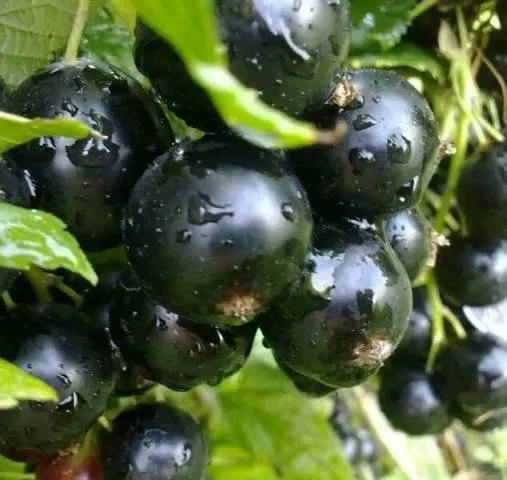
Characterization
Mid-season blackcurrant Pygmy begins to ripen in late June, early July. The flowers open alternately, the duration of the harvest lasts up to three weeks or more. From one bush, subject to the requirements of agricultural technology, 5,5-5,7 kg of tasty and fragrant berries or up to 22 t/ha are harvested. The average yield on the scale of industrial cultivation reaches 6,5 tons per hectare. An increased yield is characteristic of the variety, since the Pygmy currant bushes are self-fertile. Plants are quite unpretentious and take root easily. The variety bears fruit every year.
Pygmy blackcurrant bush endures frosts down to -35 degrees and summer 30-degree heat. Plants are undemanding to the soil, but love timely watering and top dressing. The variety is resistant to common diseases, needs preventive spraying. Sensitive to septoria and bud mite attacks.
The sweetness and pleasant specific aroma of Pygmy berries makes it possible to enjoy them fresh. Traditional preparations are made from berries, frozen and dried.
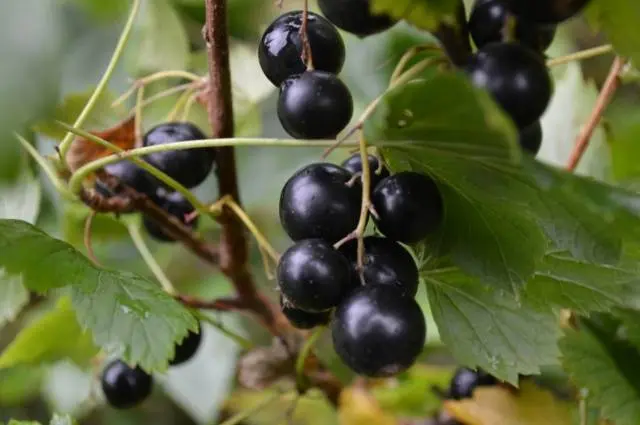
Description
Pygmy black currant bushes are tall, reach 1,5-2 m, compact, the branches are more often directed not to the sides, but upwards. Young shoots are green, with a slight anthocyanin hue, hairless. Single oval buds of brown color depart from the branches at an angle of 30 degrees. Experienced gardeners in their reviews and descriptions of the black Pygmy currant indicate that even in early spring it is easy to distinguish it from other varieties by the characteristic bronze color of the buds. The leaves are large, five-lobed, wrinkled, shiny, slightly concave in the middle, with small teeth. Pygmy inflorescences of medium length with 6-10 pale pink flowers.
Berries on a long green stalk, round, large, up to 5-7,5 g, with a thin, black skin. The flesh is sweet with the expected currant flavor and few seeds. Pygmy currant berries are famous for their balanced composition of sugar, acid, trace elements and vitamins. The sugar content is 9,4%, in 100 g of berries there are 150 mg of ascorbic acid. The grade is estimated by tasters highly: 5 points.
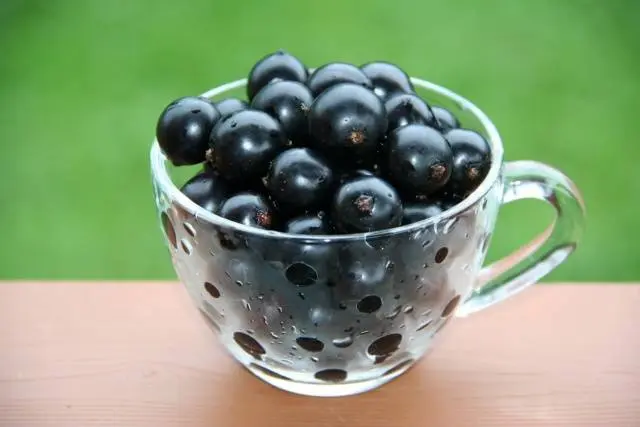
Advantages and disadvantages
The popular Pygmy currant variety has many advantages:
- Stable productivity;
- Large-fruited and high consumer quality;
- Long fruiting;
- Frost resistance;
- Powdery mildew and anthracnose resistant.
The disadvantages of the Pygmy variety include susceptibility to septoria and bud mites.
Cultivation
According to gardeners, Pygmy currants have been planted since the beginning of September. Before the onset of cold weather, the plant needs two weeks to take root. In the spring they are planted very early, in March or early April, when the buds are not yet open.

Requirements for seedlings
When buying Pygmy currant seedlings, you need to carefully choose them.
- Optimal age for planting: 1- or 2-year-olds;
- The volume of the root system is not less than 20 cm;
- Seedling height – 40 cm;
- The roots and stem are elastic, fresh, without damage.
Site Preparation
For blackcurrant Pygmy, a sunny place is selected from a south or south-west direction from buildings, a fence or a large garden. In partial shade, the berries will be small. Groundwater in the area should not rise above 1,5 m. You should also avoid a place where melt water stays for a long time in spring. The best soil for the Pygmy variety is loose, slightly acidic, not swampy or dry sandy. The pits are prepared in advance.
- During the summer digging of the soil per 1 sq. m contribute 10 liters of compost or humus, 30 g of potassium sulfate, 200 g of superphosphate;
- Wood ash (1 l), a good potash fertilizer, is often used instead of mineral preparations;
- Digging up a plot for Pygmy currants, wheatgrass roots are carefully selected from the soil;
- Between the bushes the distance is 1,5 m;
- Hole depth – 0,4-0,5 m, diameter – 0,6 m;
- The topsoil is mixed with humus in a 1:1 ratio, 300 g of wood ash, 30 g of potassium sulfate, 120 g of superphosphate are added to the mixture;
- Drainage material is laid at the bottom and covered with earthen mixture. The hole is covered with a film, fragments of slate or other improvised means so that the fertile soil does not erode.
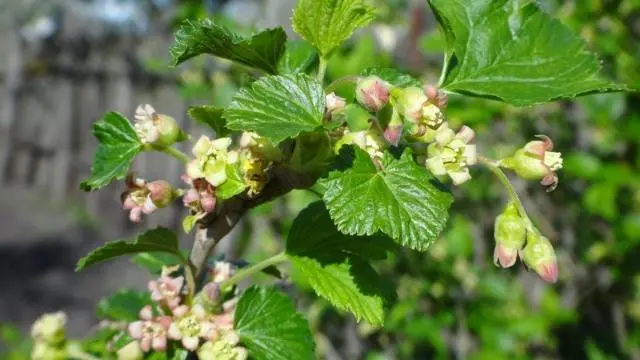
Landing
When the time comes for planting black currant Pygmy, after purchase, the seedlings are placed for half an hour in a mash from a solution of mullein and clay.
- Before planting, a bucket of water is poured into the hole, the wet soil is sprinkled dry on top and the seedling is placed, carefully leveling the roots;
- The seedling is placed vertically or with a slope of 45 degrees;
- The root neck of the Pygmy currant is sprinkled with 5-7 cm of earth so that the shoots grow well;
- A rim is formed along the edges of the hole, 5-8 liters of water are poured out. Re-water after 3 days;
- The surface is mulched with sawdust, hay, straw up to 7-10 cm thick to maintain moisture.
Some gardeners advise cutting the stems of currant seedlings to 2-3 buds in order to stimulate the growth of shoots in the spring. Others are against this method, stating that a healthy shoot should be left completely for the winter. Before frost, the seedling is spudded with earth and still mulched. In the spring, the currant seedling is freed from the poured soil, keeping the sides for watering.
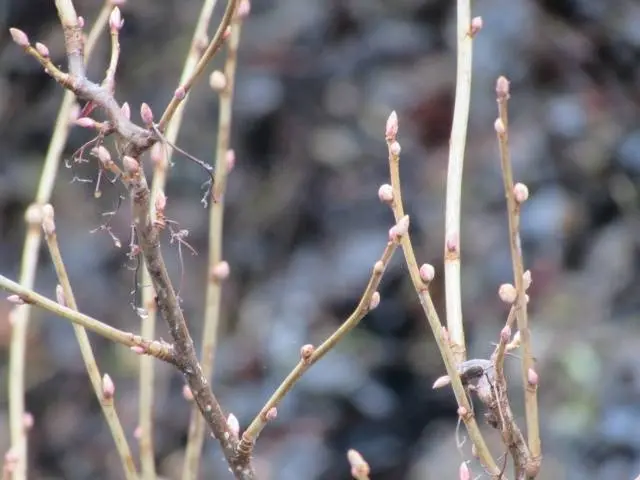
Care
Currant bushes bear fruit in the third year, mandatory constant watering and top dressing. The loosening of the earth is shallow, up to 8 cm.
Watering
The soil near the currant bushes is watered so that it is moistened to a depth of 40 cm.
- During the dry period, Pygmy currants should be regularly watered every 2-3 days, 30-40 liters per bush;
- After watering put fresh mulch;
- Important waterings in the phase of ovary formation, at the end of May, and when the berries ripen, in July;
- Moisture-charging watering of bushes is carried out in October.
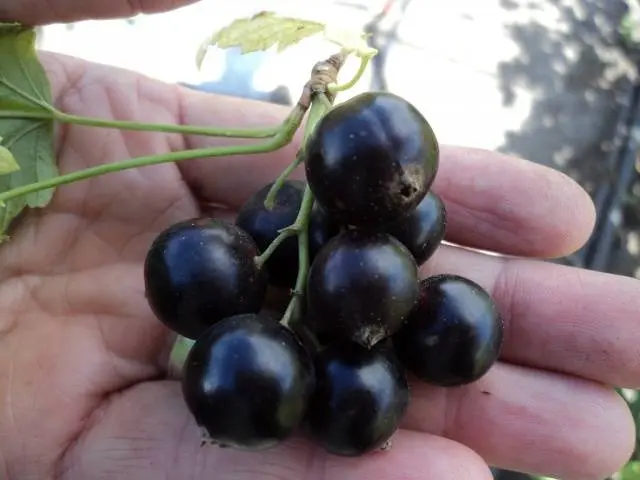
Additional fertilizing
For the next season after planting, currants are not fed if the soil in the hole and on the plot has been enriched with fertilizers.
- Pygmy black currants are given the first feeding with natural and nitrogen preparations (30 g of urea) in the spring, a year after planting;
- After harvesting, the bushes are fed with 12 g of potassium sulfate and 50 g of superphosphate per 1 sq. m of soil when digging;
- In the spring, adult currant bushes are sprinkled with 30 g of “Nitrophoska” and then watered abundantly;
- Before the formation of berries, the bushes are treated with a solution of 30 g of copper sulfate, 5 g of potassium permanganate and boric acid per 10 liters of water;
- Regular application of microelements as part of complex fertilizers – boron, zinc, manganese, copper increases the resistance of currants to fungal diseases.
Trimming
In spring, Pygmy currant bushes are carefully inspected and damaged branches are removed. Prepare sharp and clean tools for work.
- In autumn, thickening shoots are cut out that grow inside the bush;
- The largest harvest will be from 2-3 year old shoots, they are left;
- 5-year-old branches are removed;
- A full bush consists of 15-20 shoots of different ages;
- Shoots that have bent down are cut to a branch that grows vertically;
- An 8-year-old bush is thinned out, leaving only 2-year-old shoots.

Protection against pests and diseases
The blackcurrant variety Pygmy is affected by white spotting. First, brown spots up to 3 cm wide appear on the leaves. Then the center of the spot turns white. The disease can lead to the complete fall of the leaves. Preventively in the fall, all the leaves from under the currant bush are removed, the soil is dug up in the fall and spring. Before the awakening of the kidneys, the bushes are sprayed with copper sulfate. When a disease appears in the summer, after harvesting, the bushes are treated with Bordeaux mixture.
Modern acaricidal preparations are used against ticks.
Growing large and sweet berries with unique adsorbing properties is a fun activity for people who love gardening.










